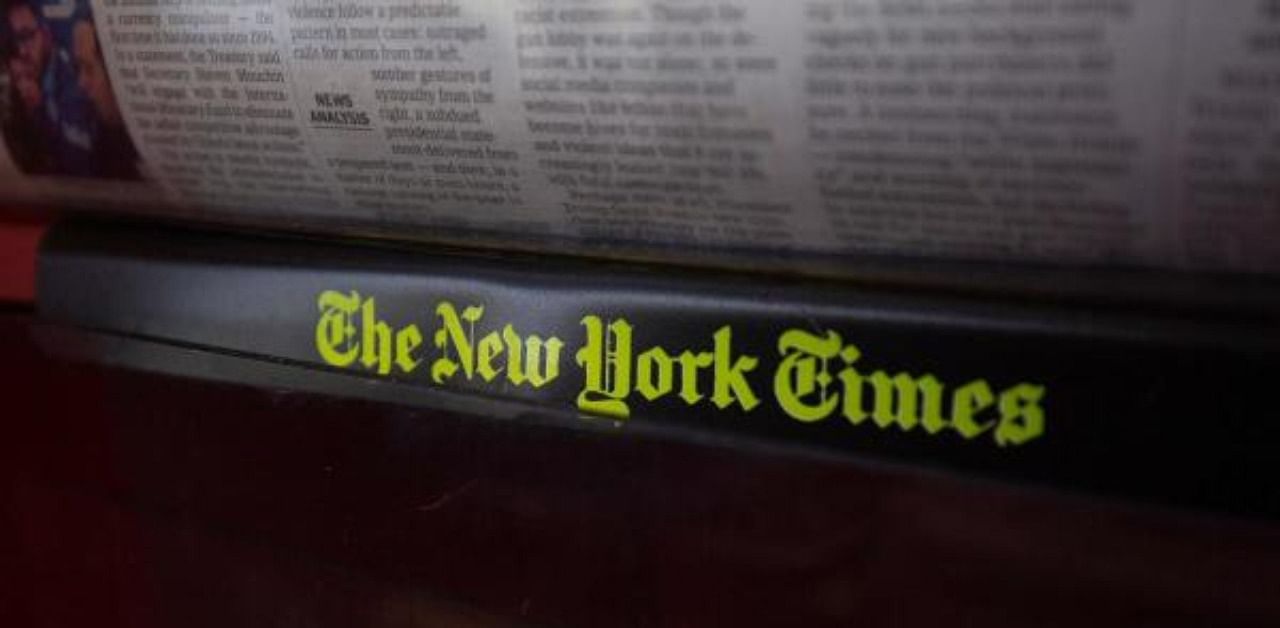
The for-profit media model has collapsed, and newspapers have not been able to craft a digital response, says Penelope Abernathy, former vice-president of the Wall Street Journal and New York Times, and a University of North Carolina professor for media economics.
She published a report in 2020 about news called "Will local news survive?"
Q: Why was the press hit so hard by the Covid-19 crisis?
A: "In many countries with a free press, newspapers have historically relied on a for-profit model. In the US it relied not on people paying for the news, but on advertisers.
Now, the for-profit model has collapsed, and newspapers have not been able to craft a digital response. Even in the smallest markets, Facebook and Google siphon three-quarters of the digital revenue. That leaves all other legacy media fighting for the digital scraps. They're not enough to build strong journalism.
Covid-19 has further decimated this advertising model. In the second quarter, usually the second-best in the year, advertising was off 40-50 percent compared to last year. That occurred at the same time that people were logging massively into news sites.
We're in a prolonged economic depression. News organisations were hanging on with slender margins, Covid-19 has accelerated what was already occurring."
Q: Are we losing news outlets?
A: "We lost a quarter of the newspapers we had in 2004. Most of the ones who disappeared were small dailies or weeklies. They did not close overnight though. They were often cut back to weekly, and that didn't work. So they cut back to digital-only, and then went away. On the other hand, over half of the newspaper's journalists we had in 2008 have been laid off.
We have 150 major regional dailies in the US and they all have the same problem: they've lost their main source of revenue. Even though there was a hope at the beginning of the digital transition, they have not been capable of attracting revenue, in ad or subscriptions.
And there's a tremendous shift in who owns the newspapers. Most of the largest chains were publicly traded. (...) The new owners are private equity and hedge funds. Their primary goal is about shareholders' return. They could basically come in and cut costs, rather aggressively.
What concerns me most in the United States is that we tend to have lost newspapers in communities that are struggling economically, not only with low incomes, but which have poverty rates twice the average. They are the communities that most need information in order to have a better future.
When you lose print newspapers, you often lose your only source of local information. You lose the person who goes to cover the city council, school meetings, local sports teams. Your access to news becomes local television. In 2016, in 20 percent of the market there was no local news reported in seven days.
If it is a digital future, what do we do about the digital divide in our country?"
Q: Which models could survive?
A: "If you're a national paper, like The New York Times, The Wall Street Journal, the Washington Post, or USA Today, there is a strategy for reaching scale with some subscribers and charging them.
But you cannot get 5.5 million subscribers for even the larger regional papers. For-profit, non-profit and hybrid structures will work in some places. There are good chances for a creative and disciplined owner, wanting to invest in the long term, located in a market that has average economic growth prospects.
Print will survive in some form. Ten years ago there were predictions that we would all be reading ebooks. And they peaked about five years ago. With very few exceptions, the era of the print daily newspaper will be remembered fondly. There is a future for weekly and monthly magazines."